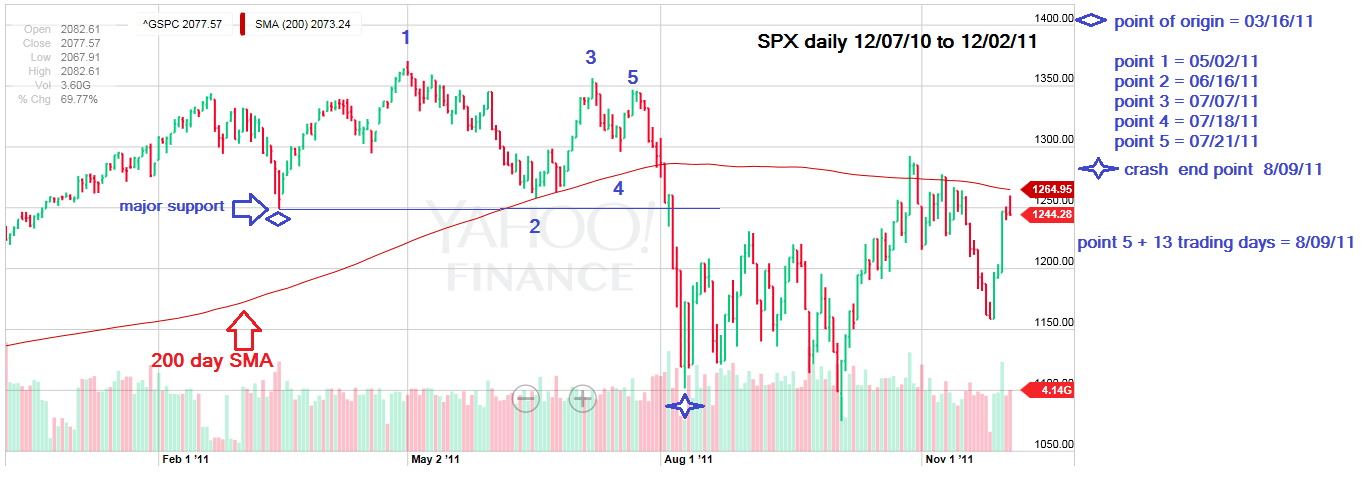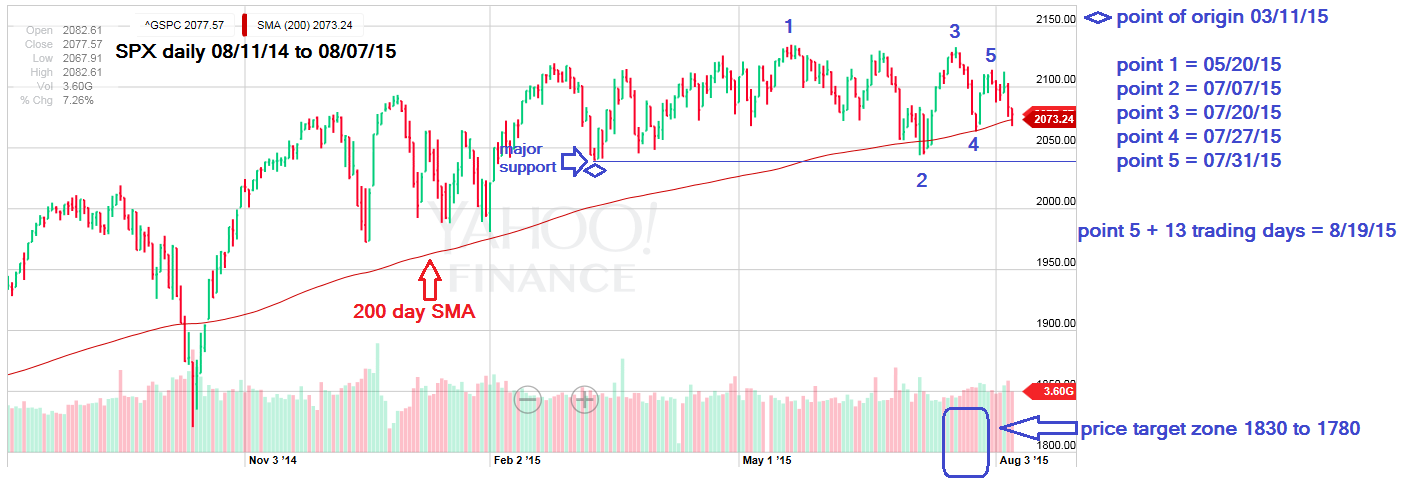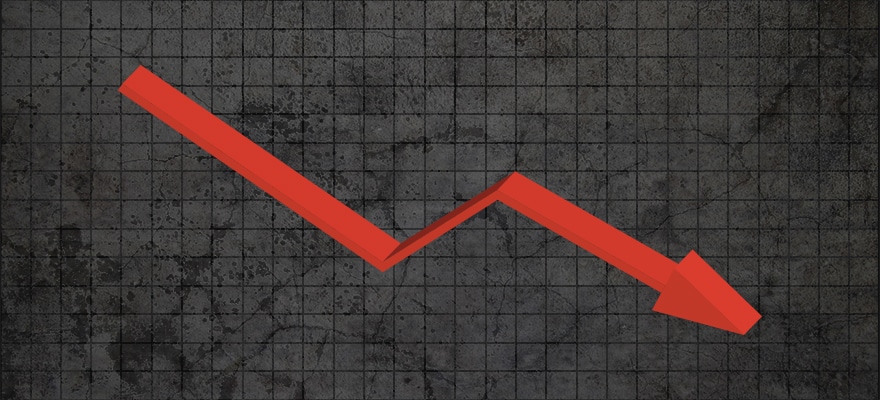The release of the US August 7 monthly payroll report has created concern that the Federal Open Market Committee (FOMC) will soon raise interest rates, which could cause stocks to decline. This fear is misplaced, the reason to be fearful of stocks declining is not a possible interest rate increase but falling commodity prices.
Deflation
Since May 2015 many commodities have continued their bear markets that began in 2014. Crude oil and copper in particular are of great importance because their prices are a reflection of industrial activity. Copper Spot prices are down over 19% since the last peak in May 2015. The copper bear market has been deepening as it nears a six-year low.
The September Light Sweet Crude Oil Futures contract is down 26% from the peak in May 2015. West Texas Intermediate (WTI) crude oil appears headed to its bottom made in late 2008.
The deep continuing decline of copper and crude oil probably means a slow down of industrial activity. As for global stock markets, the Chinese appear to be in the vanguard reflecting industrial slowdown. Other international stock markets may soon follow.
S&P 500 in 2015 vs. 2011
The title of my June 25 article was “Why June/July could be a smaller version of October 1987." Recent price activity of the S&P 500 (SPX) indicates that a near identical version of the SPX 2011 mini crash could happen very soon.
Please see the illustrated daily 2011 SPX chart in Figure 1.

And the illustrated daily 2015 SPX chart in Figure 2.

The SPX from March - July 2015 has traced out an amazingly similar pattern to what happened March - July 2011. Point “5” illustrated on the 2015 chart came on July 31 - a full moon - markets will occasionally have important turning points on new or full moons.
In 2011, after the SPX broke significantly below the 200 day Simple Moving Average (SMA) and the point of origin chart support made on March 16, 2011, it was a nearly straight down move to the bottom on August 9, 2011. As of August 7, 2015, the SPX was at 2077 sitting right at the 200 day SMA, the point of origin chart support is at SPX 2040. If within the next few trading days the SPX were to break below 2040, it would cause panic. The reason panic could occur is that most fund managers gauge their performance off the SPX. If there were a significant break below the 200 day SMA and important chart support, many of them would get the same idea at the same time - get defensive and sell stocks fast.
Conclusion
In 2011, the SPX decline from its peak at 1370 to hit bottom at 1101 made on August 9, 2011, was a near perfect Fibonacci 38.2% retrace of the entire bull market from SPX 666 to 1370. The most likely stopping point for any 2015 SPX mini crash is the October 2014 bottom at 1820. This level is very close to a Fibonacci 23.6% retrace of the entire bull market from 666 to 2134 which targets 1788. This is the bull's-eye target, with SPX 1830 to 1780 as a broader target zone.
Markets occasionally move within increments of Fibonacci numbers, some of which are 5,8,13,21,34,55 and so on. In 2011, 13 trading days after July 21, 2011, point “5” the SPX bottomed August 9. Point “5” in 2015 was on July 31, adding 13 trading days, targets August 19 as the bull's-eye day. Plus or minus two trading days would be the broader time zone.
The time to take defensive action is while the SPX is trading above 2040. Don't wait too long, the clock is ticking.






















